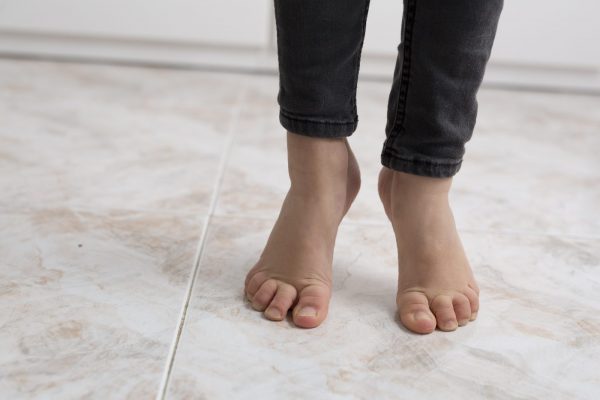Download brochure for complete course details
COURSE DESCRIPTION:
With greater awareness around vestibular dysfunction and rehabilitation in recent years, ERI’s Inger Brueckner, MS, PT, has released an updated edition of her course on Pediatric Vestibular Rehabilitation with more than 75 references from just the last 5 years. Like before, she covers anatomy, function and development of the vestibular system, while presenting current research findings to guide effective treatment for various conditions and functional impairments. Brueckner shares how specific diagnoses relate to vestibular dysfunction; including POTS, COVID-19, cancer, cerebral palsy, hearing loss and other neurological disorders in children. She addresses balance complexity and entropy in postural sway; multi-canal issues with BPPV; and medication effects on the vestibular system. Participants will deepen their understanding of the connection between vestibular development, motor performance and typical skill development in children and adolescents. You will learn to interpret assessment findings to guide individualized treatment and promote improved functional performance in clinic, home and school settings.
LEARNING OBJECTIVES:
- Identify functional impairments or complaints by children and/or their parents that indicate the need for a vestibular screening.
- Recognize at least three vestibular diagnoses in children that affect motor performance and development.
- Relate the functions of the vestibular system to normal skill development in children and adolescents.
- Connect vestibular dysfunction to problems in motor performance and behaviors during child development.
- Choose age-appropriate assessment tool to evaluate a child for vestibular dysfunction.
- Determine an appropriate individualized treatment program for a pediatric patient with vestibular dysfunction.
- Advance an intervention plan to address a child’s functional impairment(s).
AUDIENCE:
This course is appropriate for PTs, PTAs, OTs OTAs, and health practitioners that work with school-aged children and adolescents AGE 5-18.
Join the ERI Facebook Discussion Group – Pediatric Vestibular Rehabilitation
ON-DEMAND SCHEDULE:
3 Hours 30 Minutes
- Introduction to Vestibular Rehabilitation: Anatomy and physiology of the vestibular system, reflexes, balance, posture, head righting, gaze stabilization, updates of evidence
- Development and maturation of the vestibular system, age differences, multi-sensory reweighting, postural sway
- Epidemiology of dysfunction in children, pathophysiology, nystagmus, BPPV, migraine related syndromes, otitis media, unilateral and bilateral vestibular loss, mTBI/concussion/trauma, ototoxicity, central dysfunction, dysfunction associated with CP, ADHD, post cochlear implants, visual sensitivity
3 Hours 30 Minutes
- Treatment principles: adaptation, habituation and substitution, critical periods, adults vs children, red flags and cautions
- Evaluation: subjective complaints, functional observation, screening, VBI testing, ocular motor screening
- Demonstration for VBI testing, ocular motor screening
- BPPV in younger patients, positional testing Dix-Hallpike, modified Brandt-Daroff, Canalith Repositioning Technique
- Demonstration of positional testing and treatment with modifications
- Vestibular testing: VOR, VOR cancelation, head thrust, head shaking, Dynamic Visual Acuity Test, imaginary targets, Motion Sensitivity Quotient with demonstration and discussion of modifications. Review of prioritizing evaluation components and maximizing hands-on time
- Discussion of exercises with ocular motor emphasis (gaze stability), brock string, laser pointers, body-on-head motion, dual task, throw and catch modifications, using multi-sensory feedback
3 Hours 30 Minutes
- Case discussion
- Autonomic dizziness, syncope, orthostatic intolerance, POTS, post-COVID, nausea and anxiety
- Sex differences in presentations and development
- Dynamic movement and posture assessments, objective measures for balance
- Principals for balance retraining
- Decision making for HEP, dosing, progression, giving feedback during session, clinical take-a-ways, diaphragmatic function, startle posture and visual vertigo
- Demonstration: symptom relieving techniques, grounding, use of manual therapy
- School considerations, visual ergonomics, modifying environment, play, timing of activity, patient and caregiver education, lifestyle management exertion, sleep, hydration
3 Hours
- Exercise examples, inclusion of core stability, visual focus and balance to commonly used interventions, modifications for low vision, altered posture control, low-cost options for equipment, resources, how to search for ideas, collaboration among disciplines
- Break into groups for case discussion and presentation of treatment
- Present cases to group including discussion of progression of activity, presentation of case examples by instructor
30 Minutes Post-Test
Inger Brueckner, MS, PT, has practiced vestibular rehabilitation since 1994. She began teaching after completing the Emory University/APTA Vestibular Competency course in 2003. In 2010 she joined the Rocky Mountain Hospital for Children Center for Concussion as the creator and director of PACER (Progressive Acute Concussion Exertional Rehabilitation). She is a member of a multi-disciplinary team focused on providing cutting-edge, effective, safe rehabilitation. Working for Presbyterian/St. Luke’s Medical Center in Denver, CO, she has presented research findings at APTA CSM, published journal article, book chapter, developed protocols, and been invited to speak at international, national, and local conferences. She is passionate about providing the best care for all patients in a collaborative medical team, sharing lessons learned through continuing education.
Additionally, Inger Brueckner is the principle physical therapist treating limb loss at Presbyterian/St. Luke’s Medical Center. Her experience spans many age groups, causes and levels of limb loss and amputee working in a multidisciplinary team dedicated to the advancement of function in this population. With a master’s in PT, Inger has worked primarily as an outpatient therapist and hospital-based outpatient center. She co-authored an article on pre-prosthetic training and has presented at national and international conferences.
Financial Disclosure: Inger Brueckner receives an honorarium from Education Resources, Inc.
Non-Financial Disclosure: Inger Brueckner has no relevant non-financial relationships to disclose.
Once you purchase an online course you will have access to the course materials. If you have purchased this course, please ensure you have logged in to your account in order to take the exam.
Once you purchase an online course, you will have the opportunity to take an exam to test your retention of the material. If you have purchased this course, please ensure you have logged in to your account in order to take the exam. The exam must be completed with a pass rate of 80% or more in order to receive your certificate of attendance.
This course meets the criteria for 14 contact hours (1.4 CEUs) Intermediate Level.
Education Resources Inc. is an AOTA Approved Provider of professional development. Course approval ID# 09596. This Distance Learning-Independent course is offered at 14 contact hours, 1.4 CEUs. (Intermediate level, OT Service Delivery & Foundational Knowledge). AOTA does not endorse specific course content, products or clinical procedures. This course can be used toward your NBCOT renewal requirements for 14 units. Approved Provider for the FL Occupational Therapy Association CE Broker for 16.5 CE Hours - CE Broker #20-953967. This course meets the approval of the TX Board of OT Examiners. This course has been approved by the MD State Board of Physical Therapy Examiners for 14 Continuing Education Hours. Approval #2404-10 by the NJ State Board of Physical Therapy Examiners for 14 CEC's. Approved sponsor by the State of IL Department of Financial and Professional Regulation for Physical Therapy for 16.5 contact hours. Approved provider by the NY State Board of Physical Therapy for 16.5 contact hours (1.65 CEUs). Education Resources, Inc. is an approved provider for Physical Therapy CEUs in the following states: CA, KY, OK and TX. The following state boards of physical therapy accept other states’ approval: AK, AR, AZ, DC, DE, GA, HI, ID, IN, KS, MA, MI, MO, MS, NC, OR, PA, RI, SC, UT, VA, VT, WI, WY. The following state boards of physical therapy either do not require course pre-approval or do not require CEUs for re-licensure: AL, CO, CT, IA, ME, MT, NE, ND, NH, SD, WA. 12 hours of this course qualify towards the discipline-specific hours for the 20-hour requirement for NDTA re-certification. They do NOT qualify towards the 8-hour NDTA Instructor requirement for re-certification.
Education Resources Inc. 266 Main St, Suite 12, Medfield, MA 02052 • 800-487-6530





